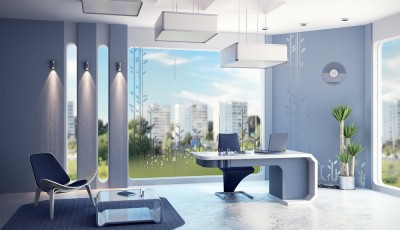3 Reasons Why Form Should Follow Function When Tackling Your Next Interior Design Project
It’s easy to get carried away at any point during an interior design project.
We see something we like the look of and instantly want to incorporate it into the design scheme without really thinking about what the item would be used for.
Although this can sometimes work out for the best, creating an eclectic look that would fit into the pages of any interior design magazine it can often mean you’re left with a room full of beautiful clutter making a room seem busy and unorganised.
This is why it’s so important to remember that form should follow function when tackling any interior design project. Doing so will allow you to avoid creating a space jam-packed with unnecessary objects (however aesthetically pleasing they may be) and allow you to instead create a space that is efficient, functional and altogether more visually appealing.
We spoke to Create Expectations, Melbourne-based interior stylist, to hear why they think that designing a space, ensuring form follows function, creates a more harmonious setting. Below are our top 3 reasons why you should also be adopting this mindset during your next interior project.
Planning for Purpose
It’s virtually impossible to even begin to imagine how a room should be decorated before knowing what the space will be used for. Therefore, it’s essential that you think carefully about the primary function of the room and also the people that will be using the room prior to considering final touches such as paint colours or textiles.
Although choosing these aspects of the interior scheme is often the most enjoyable part of the project it can never be done correctly without first understanding how the space will be used.
Knowing how the finished room will be used will ensure better design choices when it comes to colour schemes, trims and furniture. For example, a room that will be used for busy family get-togethers will require different items and finishes than a room that will be used for quiet nights spent chilling out and relaxing. Making sure that form follows function it could also make a smaller room multifunctional which could make your home more liveable.
Interior Design Schemes often develop and change over time
The great thing about interior design is that it often develops and changes with you and your needs over time. Your interior design choices are never a permanent decision and any interior design mistakes can be easily refreshed for a number of different reasons. It is for this reason that the function of the space should always be your number one priority.
The function of a room, on the other hand, is much more difficult to change.
For example, changing a room’s layout in order to achieve a more open plan living area is often a lengthy and expensive process. Therefore, considering the function of the space before any finer design details is often a better way to go.
Having a well thought out space that works for the primary function of the room will make any decorative and purely visual aspects to the room easier to change, refresh and develop over the years.
Functional spaces tend to be more valuable and desirable
However much you love your home and the interior scheme you created within it, chances are you won’t live in the house forever. There will be a time when you consider putting your home on the market for whatever reason and this is where thinking functional will be extremely beneficial.
Having a space that has been created with function in mind could really increase the overall value of your property. Designing with this mindset should also make your space more appealing to potential buyers. Because when it comes to showing how a space can be best used a highly functional room will always be better received than an ill-thought out space full of useless decorative items.
Hopefully, the above points should help you understand why ensuring that form follows function is imperative to your interior design project. To some, there is nothing more unsettling than cooking in a kitchen that has not been correctly thought-out of even sleeping in a room whose furniture placement looks and feels unusual and incorrect.
Designing a space with function in the forefront of your mind is a simple, easy way to ensure you are left with a harmonious room that is a pleasure to live in, whilst still being aesthetically pleasing.










